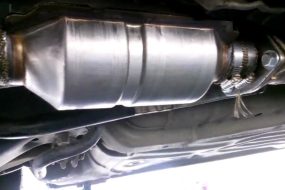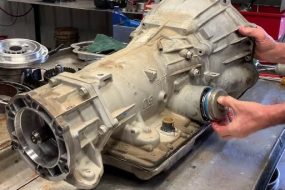
Every driver must have in one way or the other, had nails on their tires. If it’s not the fault of the driver, then why does he keep having nails on his tires and how can you protect your tires from nails?
You can protect your tires from nails or screws by driving safely, avoiding hazardous roads, keeping your vehicle tire pressure intact, and installing a tire protector on your tires to protect them from any form of puncture for life until they wear out by themselves.
Why Do I Keep Getting Nails In My Tire?
The reason why you keep getting nails in your tire is because of bad roads and rough driving. It can also be a neighbor or someone who keeps putting nails on your driveway which in turn keeps puncturing your tire.
The truth is that having nails in your tires is something that can and cannot be avoided. As a driver, irrespective of how good the road is, one day, you will experience it and you won’t say you were careful but it’s something beyond your reach.
However, if it’s obvious that the road is bad or there is construction going on nearby, you may be exposed to nails.
Can You Protect Your Tires From Nails?
Yes, you can protect your tire by installing a tire protector on your tires.
The question now is, how do you know there’s a nail on the road so as to protect your tires? It is also not quite possible to predict which road doesn’t have a nail in it.
The day I got punctured, I didn’t know there was a nail on the road. If I knew, I would have removed the nail before continuing the journey.
Someone could abandon a nail in your garage, and when you try driving out you step on it without knowing.
Possibly an angry neighbor who feels you’re trespassing a driveway policy but loves to speak more with action than words can also have a nail set down for you.
How To Protect Your Tires From Nails?
To avoid nails in your tires, you should:
1. Driving Safely
You don’t have to drive rough especially when you know the road is not bad. There could be a potential threat to your tires and other parts of the car from a bad road.
If you drive safely, there is a probability that you might see the nail and avoid it from puncturing your tires. Don’t be an aggressive driver.
2. Avoid Hazardous Roads
If you know that a particular road can be a threat to your car, why still follow the same road? Why don’t you follow another route than risking your tire from being punctured by screws or nails?
3. Keep Your Tire Pressure Intact
You should always keep your vehicle tire pressure intact, This will help prevent nails from puncturing your tire. If the tires are flat, with the weight of the car, it will make it easier for the nails to puncture the tire.
4. Install Tire Protectors
Aside from these aforementioned safety features, you can also make use of Tire Protectors to protect your tire from nails, and screws.
Tire protectors are designed to deal with your tire from the inside, thereby protecting it from any type of puncture, they are in the form of a liquid (gel) that can be injected into the tubeless, pneumatic tires.
A tire protector will not directly prevent your tire from being punctured by a nail, what it does basically is that when your tire experiences a puncture, the tire protector which is in the form of a gel is forced out by the air pressure in the tire into the punctured part, thereby creating a permanent seal.
A tire protector has the tendency to prevent up to 95% of punctures from damaging the vehicle. You sure know that most tires get abandoned due to consistent punctures from any sharp object. With the tire protector gel, you simply can increase the life span of your tire.
These are “how to avoid nails in tires”. You should always avoid driving on a bad/rough road such as a road close to building construction. If you wish to drive there, pray no nail from the building should puncture your tire.
How to Repair a Nail in Your Tire
If you don’t have a tire protector and your tire suddenly got punctured, here are three steps to follow to repair the tire.
Have The Hole Patched Professionally
This is a simple process of patching where the nail has caused some damage. It will require that the rim is removed and the damage is located, patched, and then fixed back.
You can continue driving the moment this is done. You can get this done yourself. A simple jacking up the car and losing the rim is the first move, then you simply patch where needs to be patched with the recommended materials.
Visit a Technician
If you can’t possibly get things done all by yourself, it is understandable. Check out your tire if it can still be managed by the nearest technician. If it can, drive the car to the technician and have him fix the tire.
Perhaps, if the tire air pressure is too low and you cannot drive the car again, you can remove the tire and take it to the technician. After he has fixed the damages, you can install the tire back.
Pros of Protecting Your Tires from Nails
Here are the advantages of protecting your tires from nails:
- It Saves You Money: Though patching your tires may not cost you more than $15-$50, it is still some funds you can keep aside if the tire doesn’t need to be patched in the first place.
- It Saves You Time As Well: Except you’re friends to the technician, why would you want to sit up waiting for your tire to be fixed before you can proceed to the next agenda for the day? It is bearable if it happens once a week but if it turns a one-at-a-time situation into something that happens often, you possibly will waste more time waiting for your tire to be fixed when you could be doing other things.
Conclusion
Without the tire, your car won’t move. As simple as the rounded objects look compared to the engine, they also play a big role in ensuring movements.
As a car owner, you could get a tire protector for your car to avoid repairs at all times, but if you can’t, ensure preventive measures like – safe driving, keeping the air pressure in the tire intact, and many others. You shouldn’t also forget to have a technician do the work if you can’t patch things up yourself









